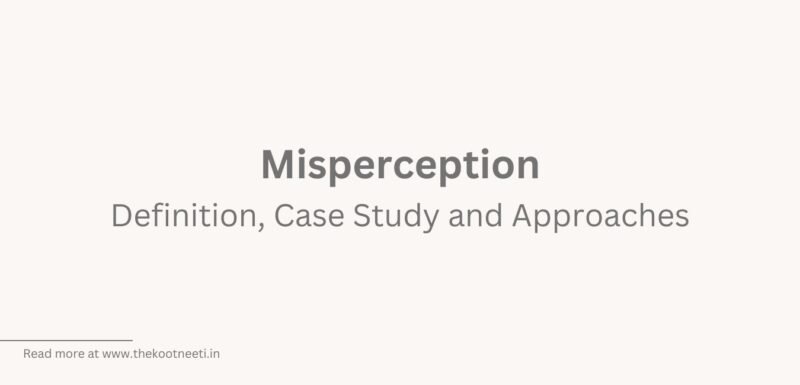Misperception in international relations: Definition, Case Study and Approaches

Misperception in international relations refers to the occurrence of misunderstandings or inaccurate perceptions between countries or groups, which can lead to misunderstandings and conflicts. Misperceptions can be caused by a variety of factors, including cultural differences, language barriers, different viewpoints or biases, and incomplete or misleading information.
Misperceptions can have significant consequences in international relations, as they can lead to misunderstandings and misinterpretations of the intentions and actions of other countries or groups. This can result in conflicts and tensions, and can make it more difficult to resolve disputes or to achieve cooperation.
To avoid misperceptions and misunderstandings, it is important for countries and groups to communicate clearly and openly with one another and to try to understand the perspectives and motivations of others. This can help to reduce the risk of conflicts and misunderstandings and promote better cooperation and understanding in international relations.
Case Study
A case study of misperception in international relations might involve analyzing a specific historical or contemporary instance in which misperception played a role in shaping the actions or relations of states or other international actors. Some possible examples might include:
- The role of misperception in the lead-up to the 2003 Iraq War, including the Bush administration’s belief in the existence of weapons of mass destruction in Iraq
- The role of misperception in the Cuban Missile Crisis, including the misjudgments made by both the US and Soviet governments about the intentions and capabilities of the other side
- The role of misperception in the outbreak of World War I, including the complex network of alliances and misunderstandings that contributed to the conflict
- The role of misperception in contemporary relations between the US and China, including misunderstandings about the other side’s intentions and goals in the economic, military, and diplomatic spheres.
To conduct a case study on misperception in international relations, you might consider the following steps:
- Identify the specific instance of misperception that you want to study.
- Research the historical and political context surrounding the misperception. This might include examining the motivations and goals of the parties involved, the broader geopolitical context in which the misperception took place, and any relevant cultural or psychological factors.
- Analyze the role and impact of misperception in shaping the actions and relations of the parties involved. This might include examining how the misperception affected decision-making, communication, and the resolution of the conflict or situation.
- Consider the broader implications of the case study for our understanding of international relations, conflict, and communication.
- Evaluate the ways in which misperception can be addressed or prevented in international relations, including through better communication and understanding of the other side’s perspective.


















